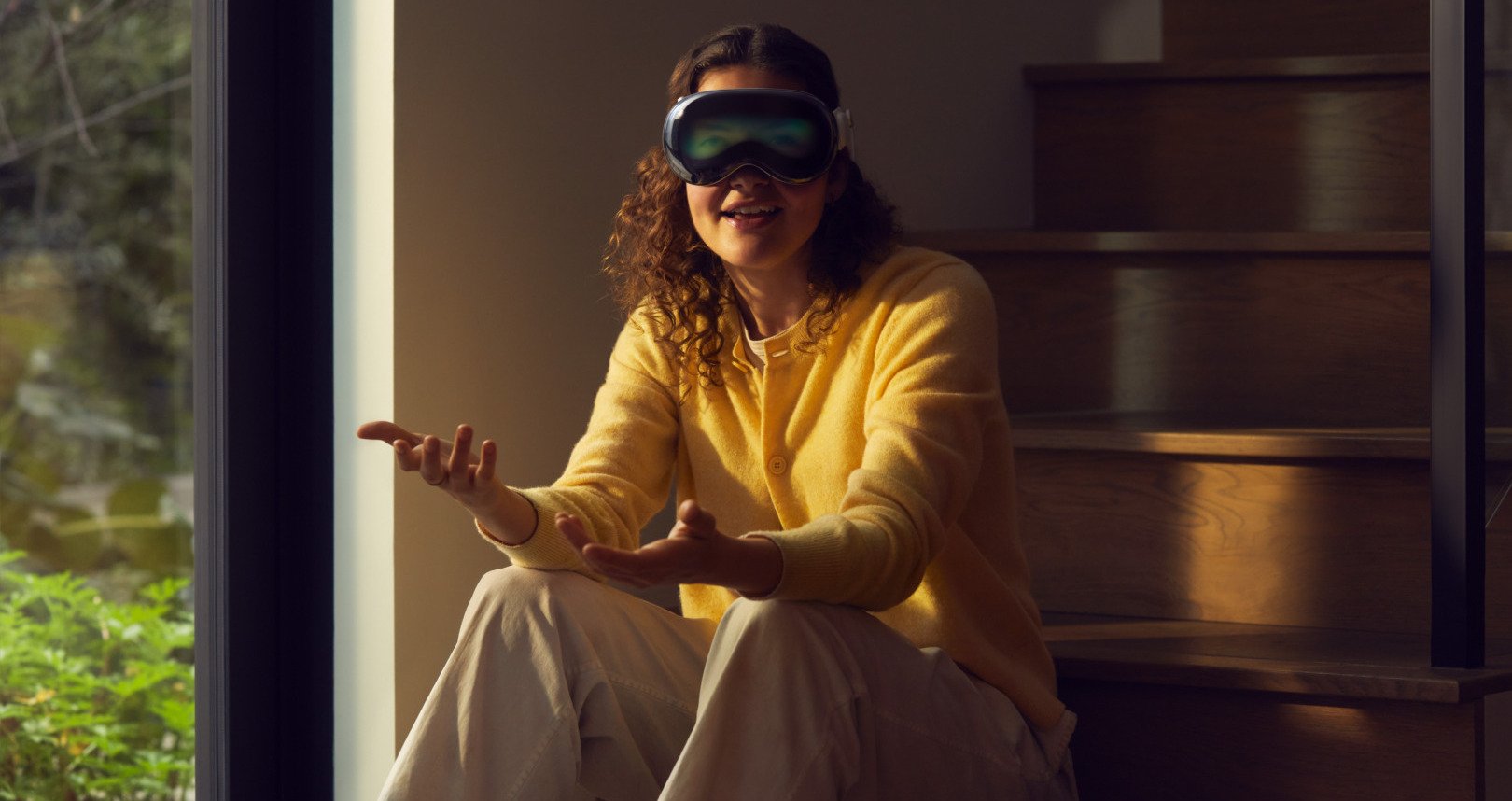With the launch of Apple Vision Pro, the tech giant has finally entered the wearable headset market and has taken the tech world by storm.
The impressive new headset boasts VR and AR capabilities: it can display wholly new worlds (Virtual Reality) or project images and video in the real world (Augmented Reality), which is a rarity among VR headsets.
Following a demo session last year, a Verge journalist described the experience as the “best headset demo ever.” Apple calls it “the most ambitious product Apple has ever created” and the “world’s most advanced consumer electronics device.”
The headset does have some incredible features, but we won’t get into them here. Instead, this article will look at how sustainable the Apple Vision Pro is (based on data provided by Apple).

How sustainable is Apple Vision Pro?
As with most new technology, the information about Apple Vision Pro’s sustainability comes from Apple itself. As such, it’s best taken with a grain of salt.
With that in mind, the Apple Vision Pro has a very encouraging section about sustainability called Apple Vision Pro and the Environment. According to the company, Apple’s headset is made with “better materials”: 100% recycled aluminum, gold, tin, and rare earth elements; the packaging is “100% fiber-based,” with “100% of virgin wood fiber com[ing] from responsibly managed forests.”
But there appears to be a catch. The Apple Vision Pro headset uses 100% recycled aluminum “in the frame and battery enclosure.” It’s unclear whether that is all the aluminum in the product or even a large part. Then, the headset uses 100% recycled gold plating and tin “in multiple printed circuit boards,” but not in all of them. What exactly is meant here by “multiple” is unclear from this environment section.
Other claims share similar ambiguity. For example, the company says the headset uses “30% or more recycled plastic in multiple components.”
Further, as Apple writes, the final assembly sites generate no waste that ends up in landfills and “[a]ll final assembly supplier sites are transitioning to 100% renewable energy for Apple production.” But final assembly is a small part of the whole production process; consumers generate waste when discarding products and suppliers and distributors use a lot of energy.
On the other hand, the “100% recycled rare earth elements” are used in “all magnets.” Many have also noted that the Apple Vision Pro might help us be more sustainable by making remote work more inviting. Apple might also be taking the environmental impact of its headset more seriously than its main competitor.
Apple Vision Pro vs. Meta VR headsets
Apple’s headset has some encouraging words about sustainability. But how does it compare to the headsets made by its main competitor?
Meta headset sustainability
The Meta headset and its titular Metaverse have long been criticized for their unclear approach to sustainability. It’s easy to imagine how a constantly interconnected 3D world viewed through extremely power-hungry screens might leave a carbon footprint.
Though we take it for granted, the ability to share data through the internet comes at a significant environmental cost. Internet pollution currently represents 2% of total pollution, and according to some, it’s comparable to that of some large nations. Making the Metaverse’s vision a reality will require significant data sharing.
Related Articles: Apple’s First ‘Carbon Neutral’ Products: Greenwashing or Genuine Sustainability? | Apple and Nike Launch Initiative to Transform Supply Chain Emissions | Apple Could Be Forced to Pay a $14 Billion Tax Bill by EU. Here’s Why
However, Meta does make significant promises about lowering its environmental impact. In its 2023 sustainability report, the company says it aims for net zero emissions along its entire value chain.
Apple has made similar claims. The iPhone company also aims to use entirely recycled batteries by 2025. A lot of Apple’s environmental issues come not from its products or its production lane, where it generally fares better than its rivals. Rather, the constant release of new models — iPhones, iPads, and Apple Watches — creates a lot of waste.
Editor’s Note: The opinions expressed here by the authors are their own, not those of Impakter.com — In the Featured Photo: An Apple Vision Pro headset. Featured Photo Credit: Apple.










